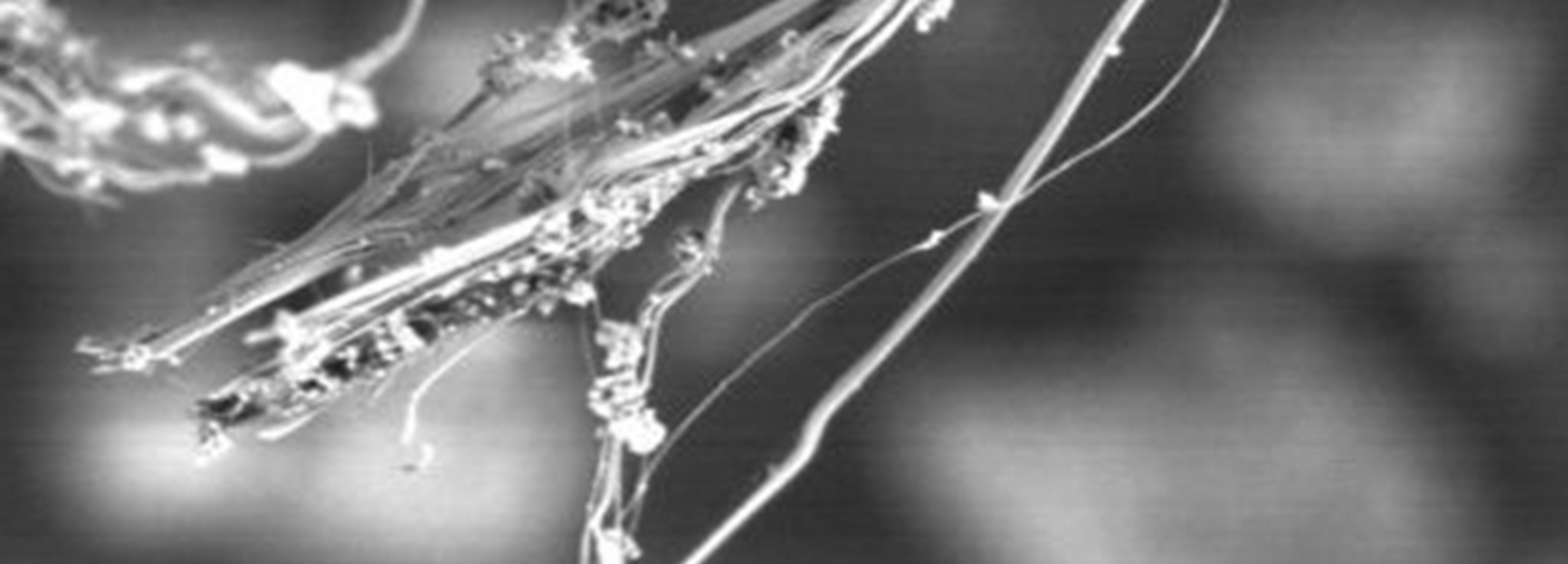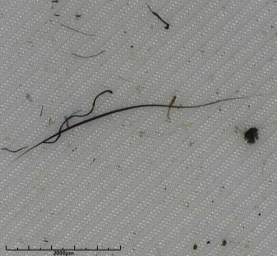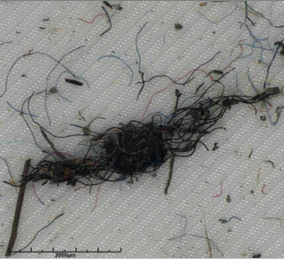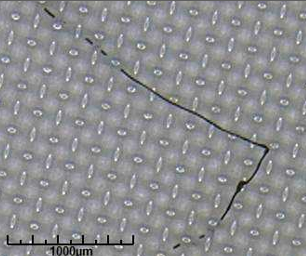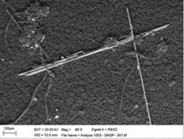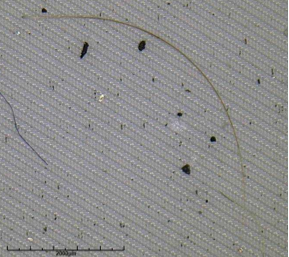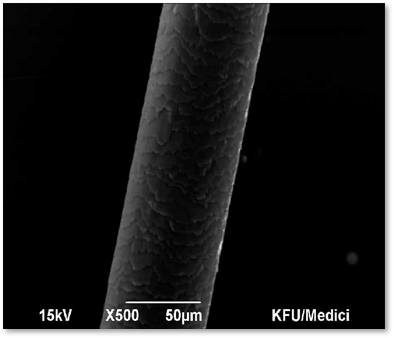What potential for damage do fibers have in technical cleanliness?
Technical cleanliness is a decisive factor in modern production, especially in the automotive and electronics industries. Technical cleanliness refers to the sufficiently low contamination of cleanliness-sensitive technical components with harmful particles. These particles can be metallic, non-metallic or fibrous and can significantly impair the functionality and service life of components. Fibers in particular are virtually unavoidable in the production environment, e.g. through clothing worn by employees in production.
The damage potential of fibers is often underestimated, whereby it is not the individual fiber but the total quantity of fibers that is critical. The omnipresence of textile fibers in production, even in clean rooms, requires targeted limit value definitions and evaluation that take into account the presence of fibers, but also the high effort and costs involved in avoiding fibers.
Definition and types of fibers
Fibers are elongated particles that are made from various materials such as textiles, plastics or mineral substances. They differ from other particles in their length and flexibility. Fibers tend to play a subordinate role in technical cleanliness, as they are omnipresent and their occurrence is almost impossible to control and difficult to determine analytically. This is why fibers are recorded in cleanliness tests today, but rarely regulated.
In many cases, individual textile fibers are not critical, but the total quantity of fibers can be functionally critical if too many fibers form a conglomerate and can block narrow hydraulic cross-sections, for example. However, fibers made of mineral materials, e.g. glass fibers, can also be critical, as this material can be as harmful as hard particles due to its hardness.
Fiber classification and measurement
The fibres are classified and measured as part of the standard cleanliness test in accordance with VDA 19.1 by means of light microscopic analysis of the particulate contamination previously extracted from the component. Various criteria can be applied using the image processing of special automatic microscope systems.
VDA 19.1 specifies the following criteria for the classification of fibers:
- streched length / maximum incircle > 20 or
- streched length / average incircle > 20
- and width measured over maximum incircle <= 50 µm
- and no metallic shine
The fiber length can be measured in two ways according to VDA 19.1
- Length = Feretmax
- Length = stretched length
Total fiber length - New in VDA 19.1
VDA 19.1 will now include the total fiber length as a new fiber criterion. This criterion can form the basis for limiting the total fiber input in cases where individual fibers are not functionally critical but the total quantity of fibers is to be regulated.
The total fiber length is the total length of all fibers on the analysis filter, i.e. the sum of the stretched length of all fibers.
Damage potential of fibers
Mechanical damage
- Jamming and blocking: Fibers can get caught in moving parts of machines and devices and hinder their movement. This can lead to increased wear and ultimately to component failure.
- Abrasion and wear: Fibers can act as abrasive particles and abrade the surfaces of components. This leads to increased wear and can significantly shorten the service life of the affected components.
- Impairment of seals: Fibers can penetrate seals and impair their effectiveness. This can lead to leaks and the ingress of impurities, which impairs the functionality and reliability of systems.
- Clogging of filters and nozzles: Fibers can clog filters and nozzles, leading to reduced efficiency and possible system failure. This is particularly critical in hydraulic and pneumatic systems where proper functioning is essential.
Electrical and electronic damage potentials
- Electrical short circuits: When wet, fibers can act as conductive bridges between electrical contacts and cause short circuits. This can lead to malfunctions or even failure of electronic components.
- Shortening of clearance and creepage distances: Fibers that are deposited between electrical contacts can shorten the clearance and creepage distances. This increases the risk of electrical breakdown and leakage currents, which can impair the reliability and safety of electronic systems.
- Electrical insulation: Non-conductive fibers can act as insulators and interrupt the electrical connection between contacts. This is particularly critical for connectors and mechanical components such as relays and switches.
- Optical impairment: Fibers can impair the function of light-optical components, such as phototransistors, by blocking or scattering the light.
- Hygroscopic properties: Some fibers, such as paper fibers, can absorb moisture from the environment and thus become conductive. This can lead to unexpected short circuits and other electrical problems.
Chemical damage potential
- Corrosion: Some fibers, especially those made of organic materials, can chemically react with the surfaces of components and cause corrosion. This can significantly impair the integrity and service life of the affected components.
- Release of harmful substances: Organic fibers can decompose under certain conditions and release harmful substances. These substances can enter into chemical reactions with the materials of the components and impair their functionality.
- Chemical incompatibility: Fibers can be chemically incompatible with the materials they come into contact with. This can lead to undesirable chemical reactions that change the physical and chemical properties of the components.
- Change in material properties: Fibers may contain additives or plasticizers that can migrate on contact with components and change their material properties. This can lead to a deterioration in the mechanical and electrical properties of the components.
Measures to reduce the damage potential
Preventive measures
Preventive measures should be taken along the entire value chain to minimize the potential for damage caused by fibres. This includes monitoring cleanliness in production, the use of clean rooms and regular cleaning of work areas.
Analytical methods
The identification and quantification of fibers can be carried out using various analytical methods, such as scanning electron microscopy (SEM) for inorganic fibers, infrared spectroscopy (IR spectroscopy) for organic fibers and light-optical microscopy. These methods enable a precise analysis of the fiber load and sources of contamination and help to develop targeted measures to reduce the fiber load.
Conclusion
Ubiquitous fibers in the production environment increasingly represent a serious potential for damage in the area of technical cleanliness. In particular, the total quantity of fibers can be more functionally critical than the individual fiber. Airborne textile fibers in particular can hardly be avoided even in clean areas or clean rooms. The high effort and costs involved in avoiding fibers must also be taken into account. However, the risks can be minimized through targeted cleanliness specifications, measures and continuous monitoring.
Newsletter registration

